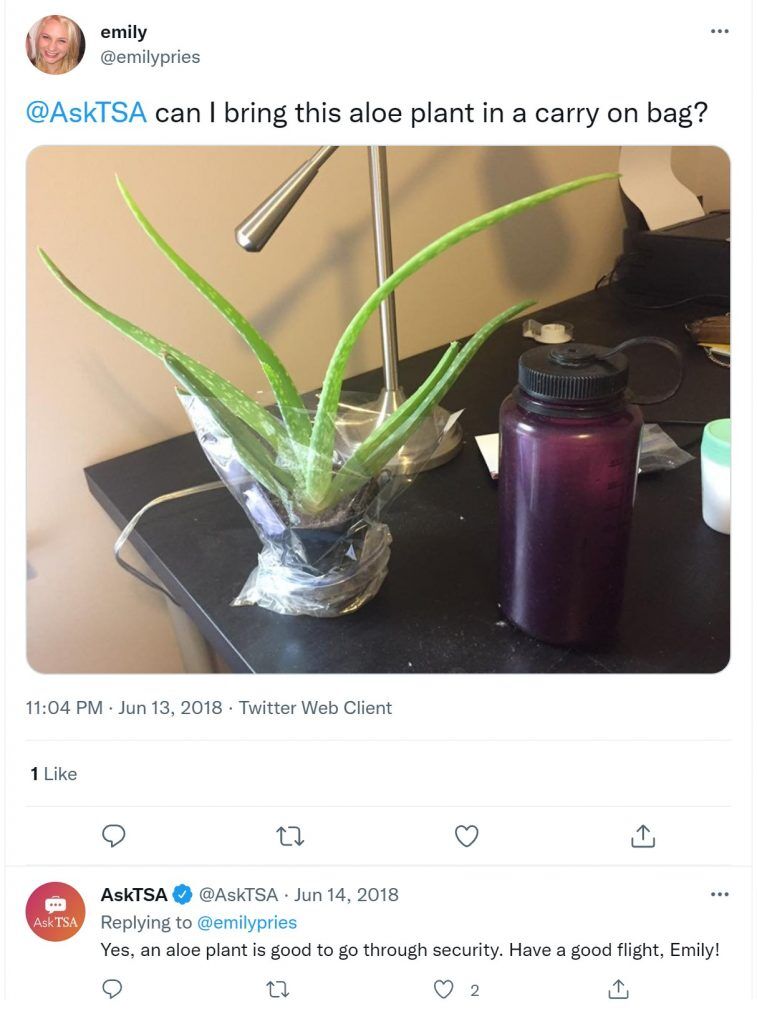Traveling with unique possessions like cactus plants can evoke a sense of whimsy and curiosity. However, this endeavor is more complex than merely packing a potted plant in your luggage. If you’re considering taking your favorite cactus on an airline journey, understanding the regulations and guidelines imposed by the Transportation Security Administration (TSA) and various airlines is essential. Here, we delve into the specifics of transporting cacti, the underlying principles driving restrictions, and best practices to ensure your prickly companion arrives safely.
Understanding the TSA Guidelines for Transporting Cactus
The first step in any travel preparation is familiarizing oneself with the current TSA regulations concerning both carry-on and checked luggage. The TSA permits travelers to bring cacti on board flights, but there are specific protocols that must be followed. Generally, cacti can be classified as plants or fruits. Because they reside in the ambiguous middle, the classification often times dictates whether or not they are permitted.
As a rule of thumb, TSA guidelines allow the transport of houseplants in both carry-on and checked baggage. However, it is crucial to ensure that your cactus does not contain any soil in its pot if you opt for carry-on luggage. Instead, consider utilizing a clean, sterile, and lightweight growing medium. This is to circumvent the potential transfer of unwanted pests or diseases that could threaten agriculture and ecosystems in other states or countries.
Local agricultural regulations also play an integral role in traveling with cacti, as individual states may impose their own restrictions. Check with your destination’s agricultural department to understand whether your cactus is allowed entry. Areas like California and Arizona, known for their native succulent populations, often have strict regulations to protect local flora from invasive species.
The Significance of Proper Packing Techniques
Once the guidelines are well understood, the next step involves effectively preparing your cactus for transit. Proper packing is essential not only for compliance but also to ensure the safety of your plant during the rigors of air travel.
First and foremost, choose a sturdy pot made of ceramic or plastic, which can endure shifting and jostling during the flight. Avoid heavy terracotta pots, as they are more likely to crack or break. If your cactus is particularly large or spiky, consider wrapping the cactus in a soft cloth or bubble wrap. This preventative measure reduces the risk of injury, both to the plant and to yourself or any handlers.
Once securely wrapped, place the cactus in a durable, padded container or box. Fill empty spaces within the box with packing peanuts or crumpled newspaper to prevent any movement. It is advisable to label the box clearly, indicating that it contains a fragile plant, thus informing handlers of the need for caution.
Understanding Why These Regulations Exist
Restrictions on transporting cacti, and plants in general, stem from a variety of factors. Invasive species pose significant ecological threats by disrupting local ecosystems, competing with native flora, and introducing pests and diseases. The TSA, along with state agricultural operations, aims to mitigate these risks by enacting strict guidelines regarding plant transport. This special focus is particularly relevant for cacti, which, despite their hardy appearance, can harbor unwelcome inhabitants in their spiny armor.
The desire to preserve natural environments coupled with the increasing global movement of people and goods creates a challenging balance. The strict regulations ultimately serve a greater purpose, aiming to shield local ecosystems from possible detriment. As you pack your cactus for travel, reflect on the broader implications; understanding these rules deepens your connection with nature and fosters a sense of responsibility towards the environment.
Seeking Alternatives: Shipping vs. Carrying
In some instances, mailing or shipping your cactus may prove to be a more prudent alternative. If the regulations appear overly cumbersome or if you possess multiple cacti, consider using a specialized plant shipping service. These services ensure that your plants are handled accordingly, complying with all regulations and ensuring their safe arrival at your destination. They provide proper ventilation, cushioning, and temperature control, which optimize the plant’s experience during transit.
Moreover, if you’re contemplating a longer stay at your destination, sourcing localized plant nurseries can be an exciting alternative. This option eliminates the need for travel with your cactus while allowing you to explore different regional varieties, enriching your collection in the process.
Conclusion: Traveling with Your Cactus
Embarking on a journey with a cactus requires meticulous planning and a thorough understanding of regulations. By diligently following TSA guidelines, packaging your plant with care, and recognizing the principles underlying these restrictions, you can enjoy the thrill of traveling with your unique botanical companion. Despite the challenges, the joy of sharing your admiration for such resilient plants is a rewarding endeavor. Happy travels, and may your cactus journey be a successful one!





Leave a Comment